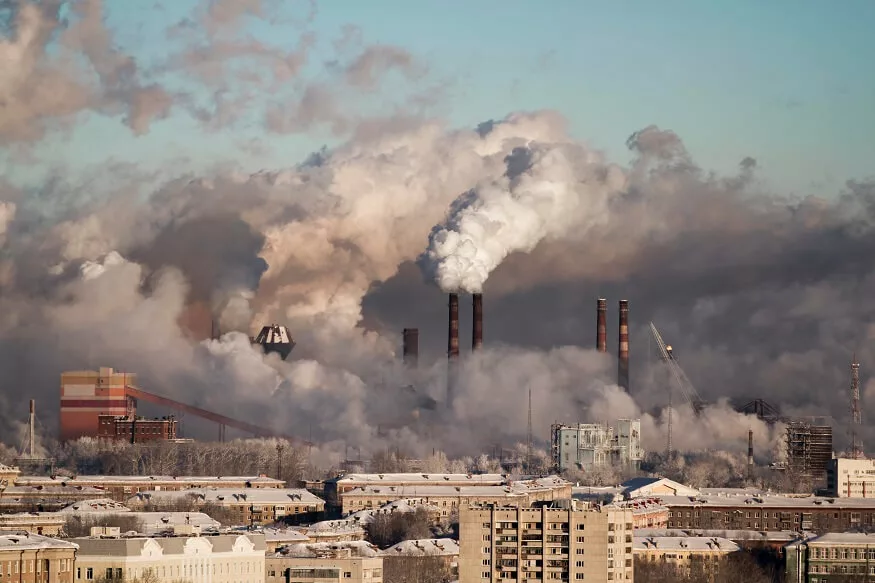The WHO’s recommended limits for pollutants are currently exceeded by nine out of ten people, with those in low- and middle-income nations suffering the most. The Clean Air Act, passed into law in the US in 1970, gives the Environmental Protection Agency (EPA) the power to protect public health by controlling the emissions of these dangerous air pollutants.
When we consider climate change and air pollution effects and Air pollution solutions, we perceive two catastrophic situations:
- People get sick and die early as a result of the poor quality of the air they breathe, especially in low- and middle-income countries (LMIC). The World Health Organization estimates that air pollution causes 4.2 million premature deaths annually. The Lancet Commission estimates that figure to increase by 2.9 to 4.3 million deaths annually when indoor air quality is taken into account.
- Against a backdrop of estimates from the International Panel on Climate Change of temperature increases between 2.5 C, glacial ice is melting, droughts are lengthening, extreme weather events are occurring more frequently, and cities around the world are reporting record-breaking heat.
Air pollution causes climate change; Conventional wisdom has long held that air pollution is caused by the same unfavorable factors that cause climate change and that by addressing one issue, we can address the other.
Unfortunately, it’s not quite that straightforward. Some climate change mitigation measures, like switching to lower-sulfur diesel fuel, have negligible or no effect. However, they can significantly improve air quality and the health of residents in impacted places. Others have negligible effects on health yet improve the environment. Other well-liked and frequently expensive air pollution solutions are also ineffective at reducing air pollution or slowing the rate of climate change.
The report’s analysis of climate change focuses mostly on practices that raise atmospheric levels of carbon dioxide and black carbon.
Also Read : Diarrhoea in Children Symptoms, Causes, and Solutions
Byproducts of burning carbon include PM2.5, black carbon, and CO2. The three main sources are as follows:
- Coal and natural gas-based energy production
- Using gasoline or diesel to move people and things in public and privately
- Uncontrolled waste incineration and open fires, which primarily involve agricultural burning and forest fires.
Coal-fired power plants are the granddaddies of air pollution and climate change – and we’ve known this for some time. Likewise, eliminating coal and other fossil fuels like tar and lignite from power generation is the single most effective step governments can take to improve air quality and combat climate change.
If you take a big coal-fired power plant in the middle of a city and replace it with renewable energy, that’s a huge step to reduce air pollution. C Scrubbers or switching coal-fired power stations to natural gas lower PM2.5 emissions, which is good for human health, but the carbon-burning power plants continue to emit CO2 and other climate-changing gasses.
Also Read : Eczema – Causes, Symptoms, Diagnosis & Treatment
Best practices for lowering Air pollution
Other air pollution solutions that affect climate change by reducing CO2 emissions and benefit health by reducing PM2.5 include:
- Switching to electric cars from gasoline and diesel-powered ones. For instance, Shenzhen, China, has moved from a diesel bus fleet to an electric bus fleet, which is predicted to result in a 48% reduction in CO2 emissions and a considerable reduction in particulate matter.
- Removing diesel emissions that aren’t under control. According to studies, going from the equivalent of Euro I to Euro IV vehicle fleet standards can cut fleet emissions by around 80%, and upgrading to Euro V standards further reduces the remaining emissions by 80%. This is a fantastic step to reduce CO2 levels and air pollution.
- Keeping crops from burning. Specific technologies and education can enhance farmer outcomes without burning a hole in anyone’s pocket. The success of agricultural extension programs in underdeveloped nations depends on education and assistance. For instance, the practice of burning the leftover wheat stubble has mostly been abandoned in Poland. Crop burning, a significant source of air pollution, is being combated by the government in Delhi through awareness-raising, capacity-building, technological advancements, and financial assistance for farmers to buy straw management equipment. Nevertheless, the twice-yearly traditional crop burning is a major cause of Delhi’s infamous smog.
We know that exposure to PM2.5 increases a person’s susceptibility to respiratory infections; Preliminary research and anecdotal evidence from the early stages of the COVID-19 pandemic suggest that infection rates and sickness severity were originally greater and more severe in cities with lower air quality.
A recent survey by the Clean Air Fund of individuals in the UK, Bulgaria, India, Nigeria, and Poland highlights how increasingly the citizenry is asking that its leaders take prompt and decisive action to reduce air pollution. The study, which was conducted between 22 May and 2 June when the pandemic was underway, according to The New York Times, indicated resounding support for tighter air quality restrictions and improved enforcement of current laws.
Development’s effects on weather and air pollution
Air pollution effects like Urbanization: Numerous studies have revealed a strong correlation between the rate of urbanization and the rise in air pollution. Urbanization impacts meteorology, which in turn affects air quality because cities are frequently associated with altered meteorologies such as higher temperatures and lower wind speeds. This is in addition to the growth in pollution-emitting sources such as vehicles and factories.
For instance, the National Capital Region (NCR) of India has had a significant expansion in urban and built-up areas during the past few decades (17-fold increase in the urban extent). The changes in land use are predicted to cause a warming of 1.5–2 °C in the surface temperature and 4-5 °C in the land surface temperature (LST) during the evening and night.
Air pollution Effects
Air pollution effects have long been linked strongly to cancer and chronic obstructive pulmonary diseases. Air pollution causes respiratory diseases, including acute respiratory infections (especially in vulnerable populations like children and the elderly), poor birth outcomes, and cardiovascular diseases like strokes and heart disease. Air pollution affects health, the economy, and development (WHO, 2018).
India contributed 50% of the global estimates of death and disability-adjusted life years related to ambient particulate matter pollution for the year 2015, according to a study that was published in The Lancet (Cohen et al, 2017). In India, air pollution is to blame for 1 in 8 fatalities. According to a study conducted by experts at the University of Chicago’s Energy Policy Institute (EPIC), individuals in India.
Also Read : Nature vs. Nurture Child Development
Conclusion
At EuroSchool, the Air pollution chapter including the air pollution causes is taken very seriously, and children get to learn about its challenges and effects to health with full attention. Pollutants that are harmful to both human health and the health of the entire planet are released into the air, which is referred to as air pollution.










